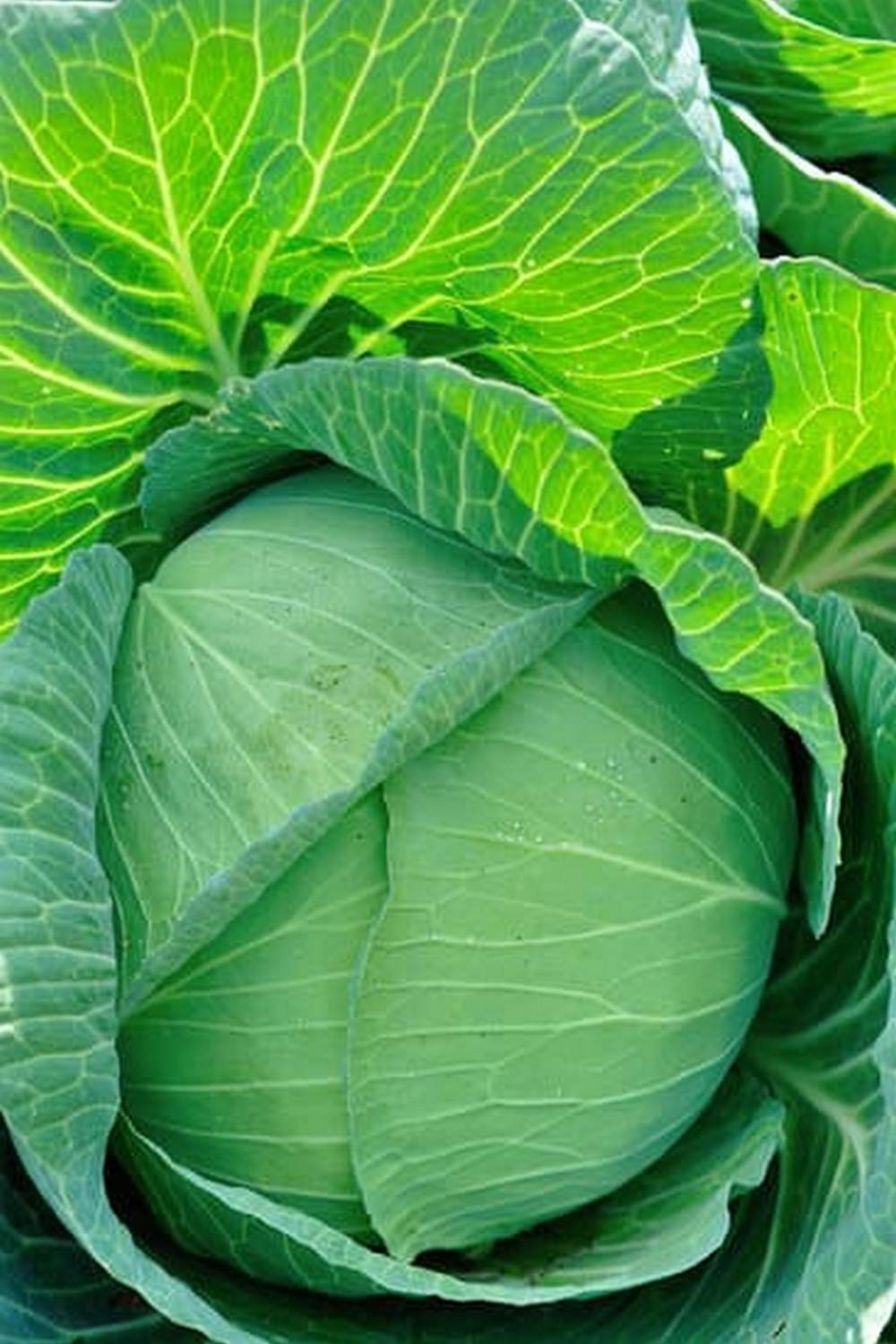When it comes to cultivating a thriving vegetable garden, the concept of companion planting plays a crucial role. Companion plants for vegetable gardens are essential in promoting healthy growth, maximizing yield, and warding off pests and diseases. In this article, we will explore the role of companion plants and how they can benefit your vegetable garden.
Companion planting involves the strategic arrangement of different plant species in close proximity to one another, taking advantage of the beneficial interactions between them. This practice has been utilized for centuries as a natural and sustainable way to improve crop quality and overall garden health. By understanding the science behind companion planting, gardeners can create harmonious ecosystems that support the growth and development of their vegetables.
In the following sections, we will delve into the specifics of companion planting, including how certain plants can help control pests and diseases, factors to consider when selecting companion plants, examples of effective plant pairings for popular vegetables like tomatoes, peppers, leafy greens, and root vegetables. Additionally, we will provide tips for implementing companion planting in your own vegetable garden and maximizing its benefits.
Whether you’re an experienced gardener or just starting out, companion planting is a valuable technique that can elevate the success of your vegetable garden.
Understanding the Role of Companion Plants
Companion planting is a gardening practice that involves planting different types of plants together to benefit each other in various ways. When it comes to vegetable gardens, companion plants play a crucial role in maintaining the health and productivity of the crops. One key benefit of companion planting is the ability of certain plants to control pests and diseases.
For example, marigolds are often used as companion plants for vegetable gardens because they can deter pests like nematodes. Additionally, some plants have been found to attract beneficial insects that help pollinate crops or prey on harmful pests, contributing to a healthier garden ecosystem.
In addition to pest control, companion plants can also create mutual beneficial relationships with the vegetables they are planted alongside. This concept relies on the interaction between different plant species, where one may provide nutrients or shade for another. For instance, legumes like beans and peas are known for their ability to fix nitrogen in the soil, benefiting neighboring vegetables by improving soil fertility. Understanding these roles of companion plants is essential for successful vegetable gardening.
When selecting companion plants for vegetable gardens, there are several factors to consider. These include the specific needs of the vegetable crops being grown, as well as the compatibility and potential interactions between different plant species. Some examples of well-known companion plants for vegetable gardens include basil with tomatoes, carrots with onions, and radishes with spinach. By strategically choosing companion plants based on their characteristics and benefits, gardeners can create a more balanced and sustainable environment for their vegetables.
| Companion Plant | Vegetable |
|---|---|
| Basil | Tomatoes |
| Carrots | Onions |
| Radishes | Spinach |
Selecting the Right Companion Plants
When it comes to selecting the right companion plants for your vegetable garden, there are several factors to consider. One important factor is understanding the specific needs of each plant and how they can benefit from being paired with certain companion plants. Another factor to consider is the compatibility of different plant species in terms of their growth habits, nutrient requirements, and resistance to pests and diseases.
Factors to Consider
When choosing companion plants for your vegetable garden, it is important to consider the individual needs of each plant. Some plants may require more sunlight, while others thrive in partial shade. Additionally, some plants have specific nutrient requirements that can either complement or compete with those of other plants. It’s also important to consider the growth habits of each plant, as some may spread out while others grow tall.
Examples of Compatible Plants
There are many examples of companion plants for vegetable gardens that work well together. For example, planting aromatic herbs like basil and cilantro alongside tomatoes can help enhance the flavor of the tomatoes and repel pests. Marigolds are another great companion plant for many vegetables, as they can help deter nematodes and other soil-borne pests. Additionally, planting legumes like peas or beans alongside nitrogen-hungry vegetables like corn or squash can help improve soil fertility.
Beneficial Relationships
Ultimately, selecting the right companion plants for your vegetable garden is about creating a harmonious ecosystem where different plant species work together to support one another’s growth and health. By strategically pairing compatible plants and considering their individual needs, you can maximize the benefits of companion planting in your vegetable garden. With careful planning and consideration, you can create a thriving garden filled with healthy and productive crops.
Companion Plants for Tomatoes
When it comes to growing tomatoes in your vegetable garden, choosing the right companion plants can significantly impact their growth and yield. By selecting the appropriate companions for your tomatoes, you can help control pests and diseases, improve soil health, and enhance overall crop productivity. Here are some of the best companion plants for tomatoes:
1. Basil: Planting basil alongside your tomato plants can help repel mosquitoes, flies, and aphids while also improving the flavor of the tomatoes.
2. Marigolds: These vibrant flowers are known for their ability to deter nematodes and other harmful soil-borne pests, making them an excellent companion for tomato plants.
3. Nasturtiums: Nasturtiums not only add a pop of color to your garden but also act as a trap crop for aphids, protecting your tomato plants from these destructive pests.
Incorporating these companion plants into your tomato garden can create a more balanced and vibrant ecosystem, resulting in healthier and more productive tomato plants. By understanding the role of companion plants and how they can benefit the growth of your tomatoes, you can maximize the potential of your vegetable garden.
When choosing companion plants for your tomatoes, consider factors such as their ability to repel pests, attract beneficial insects, provide shade or support, and improve soil fertility. By carefully selecting and strategically planting companion plants alongside your tomatoes, you can create a harmonious environment that promotes the overall well-being of your vegetable garden.
Companion Plants for Peppers
When considering companion plants for your vegetable garden, it’s important to choose ones that will enhance the growth and yield of specific crops. In the case of peppers, there are several companion plants that can be planted alongside them to provide various benefits. One popular companion plant for peppers is basil. Not only does basil repel pests such as aphids, spider mites, and mosquitoes, but it also improves the flavor of peppers when grown in close proximity.
Another beneficial companion plant for peppers is onions. Onions help deter harmful insects like aphids and thrips, which can damage pepper plants. Additionally, onions have a vertical growth pattern that doesn’t compete with the spreading nature of pepper plants, making them compatible planting partners. Lastly, parsley is another excellent companion plant for peppers. Parsley attracts beneficial insects like hoverflies and predatory wasps, which prey on pest insects that can harm pepper plants.
Incorporating these companion plants alongside your pepper crop not only helps control pests but also promotes a healthier garden ecosystem overall. By strategically selecting and placing companion plants in your vegetable garden, you can create a more diverse and balanced environment that supports the optimal growth of your crops.
| Companion Plant | Benefits |
|---|---|
| Basil | Repels pests and enhances flavor of peppers |
| Onions | Deters harmful insects and has a non-competing growth pattern with pepper plants |
| Parsley | Attracts beneficial insects that prey on pest insects |
Companion Plants for Lettuce and Leafy Greens
Companion planting plays a crucial role in promoting the health and productivity of lettuce and other leafy greens in vegetable gardens. By strategically pairing these crops with certain companion plants, gardeners can effectively ward off pests, improve soil quality, and maximize the overall yield of their harvest. When selecting companion plants for lettuce and leafy greens, it is essential to consider factors such as pest control, nutrient uptake, and space utilization.
Here are some ideal companion plants for lettuce and leafy greens:
- Herbs: Herbs like basil, cilantro, and dill not only repel pests that commonly affect lettuce but also add a pleasant aroma to the garden. Their presence can effectively deter aphids, spider mites, and other harmful insects.
- Flowers: Planting marigolds or nasturtiums alongside lettuce and leafy greens can help attract beneficial insects such as ladybugs and parasitic wasps that prey on common garden pests. Additionally, these flowers can enhance the aesthetic appeal of the garden.
- Root vegetables: Carrots and radishes make excellent companions for lettuce and leafy greens. As they grow underground, they do not compete for sunlight with the leafy vegetables. Moreover, their roots help break up compacted soil, allowing better air circulation and nutrient absorption for the entire plant community.
Incorporating these companion plants into your vegetable garden layout can greatly contribute to growing healthier and more productive crops of lettuce and leafy greens. Remember to plan your garden carefully to optimize space utilization while creating a diverse ecosystem that supports the growth of all companion plants. By doing so, you can enjoy an abundant harvest while maintaining a balanced environment for your vegetable garden.
Companion Plants for Root Vegetables
Examples of Companion Plants for Root Vegetables
When it comes to growing root vegetables such as carrots and radishes, selecting the right companion plants is crucial for their successful growth and development. Some excellent companion plants for these root vegetables include herbs like rosemary and sage, which can help deter pests that are harmful to root vegetables. Additionally, onions and garlic are known to repel carrot flies, making them great companions for carrots.
The Positive Effects of Companion Plants on Root Vegetable Growth
Companion plants for root vegetables not only provide pest control but also offer other benefits. For instance, planting beans or peas alongside root vegetables can help fix nitrogen in the soil, which is essential for the healthy growth of root crops. Meanwhile, the presence of certain aromatic plants like marigolds can improve soil quality and discourage harmful nematodes from attacking the roots of vegetables.
Implementing Companion Planting for Root Vegetables
To effectively incorporate companion planting for root vegetables in your garden layout, consider interplanting these vegetables with their compatible companions. This not only maximizes space but also promotes a diverse ecosystem within your garden, ultimately leading to healthier and more abundant harvests. It’s important to research the specific needs of your chosen vegetable and companion plants before creating a planting plan to ensure they will thrive together.
Implementing Companion Planting in Your Vegetable Garden
Incorporating companion planting into your vegetable garden can be a rewarding and effective way to promote plant growth, improve soil health, and control pests and diseases. When selecting companion plants for your vegetable garden, it is important to consider factors such as the compatibility of plants, their growth habits, and their ability to benefit each other. By strategically choosing companion plants, you can create a balanced and thriving garden ecosystem.
One way to implement companion planting in your vegetable garden is by interplanting different species together. For example, planting aromatic herbs like basil or parsley alongside tomatoes can help repel pests that are prone to attacking tomato plants. Additionally, certain flowers such as marigolds can be planted among vegetables to deter harmful insects and attract beneficial ones.
Another approach to implementing companion planting is through crop rotation. By rotating crops in your garden beds, you can prevent the buildup of pests and diseases while also replenishing the soil with essential nutrients. For instance, planting nitrogen-fixing legumes like peas or beans alongside heavy-feeding crops like corn or squash can help improve soil fertility and overall plant health.
It is also vital to avoid common mistakes when using companion plants in your vegetable garden. Overcrowding plants or selecting incompatible companions can lead to stunted growth and decreased yields. Proper research and planning are essential to ensure that the chosen companion plants will complement each other effectively. By carefully implementing companion planting strategies, you can create a harmonious and productive garden that benefits from the mutual relationships between different plant species.
Maximizing the Benefits of Companion Planting
Companion plants for vegetable gardens have been utilized for centuries, and understanding the role of these plants can be key to a successful harvest. By maximizing the benefits of companion planting, you can create a thriving garden ecosystem that supports the growth and health of your vegetable crops.
When selecting companion plants for your vegetable garden, it’s important to consider factors such as pest control, soil improvement, and pollination. For example, planting marigolds alongside tomatoes can help repel nematodes and other pests that commonly affect tomato plants. Additionally, the presence of certain flowering plants like lavender or sunflowers can attract beneficial insects that prey on harmful pests.
In order to maximize the benefits of companion planting in your vegetable garden, it’s essential to carefully plan and strategize your garden layout. Grouping together plants that have mutually beneficial relationships can help create a harmonious environment that promotes healthier growth and higher yields. Additionally, rotating crops each season and incorporating cover crops during off-seasons can help improve soil fertility and reduce the risk of disease.
By implementing these strategies and taking advantage of the natural relationships between plants, you can create a self-sustaining and productive vegetable garden. Maximize the benefits of companion planting by carefully selecting companion plants for your vegetables, planning your garden layout strategically, and consistently maintaining a healthy ecosystem. Give companion planting a try in your own garden and experience the multitude of benefits it has to offer.
Conclusion
In conclusion, companion planting in vegetable gardens offers a natural and effective way to improve the health and yield of your crops while reducing the need for chemical interventions. By selecting the right companion plants, you can create a harmonious ecosystem that supports the growth of your vegetables and helps control pests and diseases. Understanding the role of specific companion plants and implementing them in your garden layout can lead to healthier, more productive crops.
The benefits of companion planting are numerous, from improved soil health to increased pollination and pest control. By choosing the right companion plants for your vegetables, you can create a balanced and thriving garden environment. For tomatoes, peppers, leafy greens, and root vegetables alike, there are specific companion plants that can enhance their growth and overall health.
As you plan your vegetable garden for the next growing season, consider incorporating companion plants into your garden layout. By doing so, you not only support the health of your crops but also contribute to a more sustainable and eco-friendly gardening approach.
Whether it’s planting basil alongside tomatoes or marigolds near peppers, these small adjustments can make a big difference in the overall success of your vegetable garden. Give companion planting a try in your own garden and experience firsthand the benefits it brings to your crops.
Frequently Asked Questions
What Plants Grow Best Together in a Vegetable Garden?
Plants that grow best together in a vegetable garden are ones that complement each other’s growth patterns and requirements. For example, planting corn, beans, and squash together – known as the “Three Sisters” planting method – can benefit all three crops.
The corn provides support for the beans to climb, while the beans add nitrogen to the soil, benefiting all three plants.
What Not to Plant Together in a Veggie Garden?
Certain plants should not be planted together in a vegetable garden due to their differing growth or nutritional needs. For instance, potatoes and tomatoes are not recommended to be planted near each other due to the potential spread of diseases like blight. Additionally, planting onions near beans can stunt the growth of the beans.
What 3 Vegetables Grow Well Together?
Three vegetables that grow well together in a vegetable garden are tomatoes, basil, and carrots. Tomatoes provide shade and support for basil, while carrots help break up compacted soil for both tomatoes and basil. This combination also naturally deters pests such as aphids and whiteflies from attacking these plants.

If you’re looking to get into vegetable gardening, or are just looking for some tips on how to make your current garden better, then you’ve come to the right place! My name is Ethel and I have been gardening for years. In this blog, I’m going to share with you some of my best tips on how to create a successful vegetable garden.





